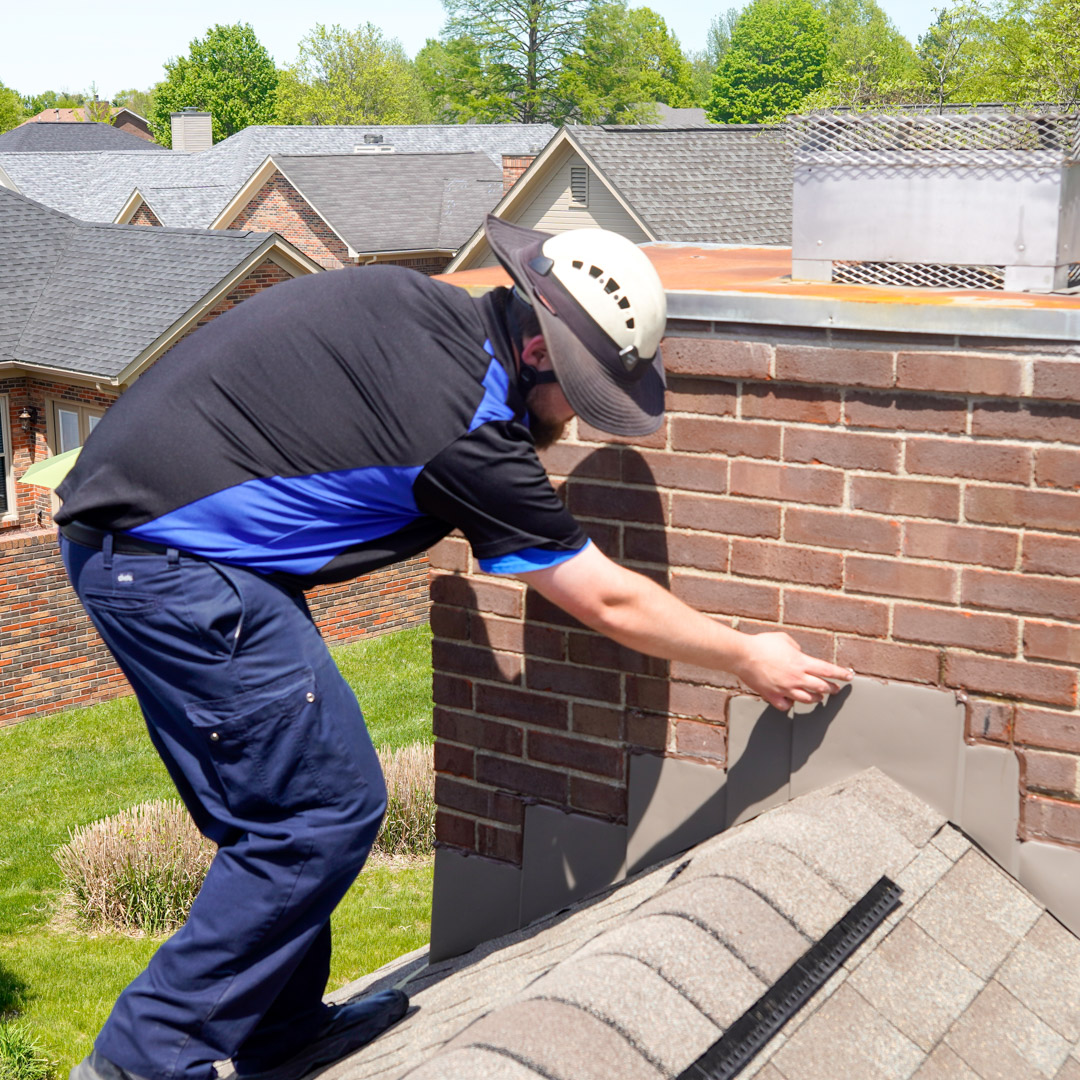A Family Owned Company You Can Trust
With all the punishment chimneys have to endure, it’s a wonder they hold up as well as they do for as long as they do. But no matter how well they’re built and maintained, every chimney will eventually need some repair work and possibly rebuilding. When this work is required for your chimney, American Chimney & Fireplace is ready to get the chimney back into top shape.
We’re a family-owned, family-operated chimney company that’s been helping homeowners in the greater Louisville, KY, region solve their chimney masonry issues since 2007. Here are some of the ways we can help you.

Brick Replacement
Water is a chimney’s worst enemy. Porous to begin with, chimney bricks gradually absorb water from rain and snow. When temperatures drop and the water freezes and expands, the bricks begin to spall and break apart.
The result can be a major water leak, a leaning chimney or a chimney that completely collapses.
Our certified chimney technicians will inspect your chimney’s masonry and replace damaged bricks to restore soundness and a uniform, consistent appearance.
Tuckpointing for Chimney Mortar
Tuckpointing (or “repointing”) is the process of scraping out deteriorating mortar and replacing it with a strong new compound. This will strengthen the overall chimney structure and make it look great.
Water damage is a common cause of crumbling mortar. Lightning strikes, hail, freeze-thaw cycles and major house-shifting can also lead to problems with the mortar and the chimney as a whole.
Chimney Waterproofing
After repair or rebuilding work is complete, we recommend having a strong waterproof sealant applied to your chimney’s masonry surfaces. This breathable sealant will keep water from getting into the bricks and mortar joints while allowing moisture beneath the seal to get out.
Chimney Crown Repair
The concrete crown at the top of your chimney is there to shield the interior spaces of the chimney from rain, snow, debris and small animals. When the crown is cracked or broken, big trouble is likely on the way.
Crowns can be damaged by the same things that damage a chimney’s bricks and mortar. American Chimney & Fireplace provides repair, rebuilding and water-sealing for all types of chimney crowns.
Chimney Masonry Inspections
Before any work is done on any part of your chimney, we’ll perform a thorough inspection. This will tell us exactly what’s happening, why it’s happening and the best way to go about resolving it.
Never let a chimney service company begin any masonry work on your chimney without first doing an inspection. If you talk with a company that wants to do the work but not the inspection, go find another company to talk with.
Chimney Rebuilding
Major chimney damage often requires some level of rebuilding. A chimney with failing bricks and crumbling mortar isn’t safe to operate or live around.
Our experienced masons can rebuild the sections of the chimney that have suffered serious damage. We can also rebuild the entire chimney structure from the roofline up. The work we perform is done in compliance with state and local code requirements.
The Right Solutions for Your Chimney Masonry Issues
When your chimney masonry is in trouble, American Chimney & Fireplace is quick to respond and get the problem solved the right way. Give us a call, or get in touch through our contact form.
We serve all of Louisville, KY, as well as Prospect, KY, Shelbyville, KY, Jeffersonville, IN, Taylorsville, KY, Hillview, KY, Shepherdsville, KY, and other local communities.




